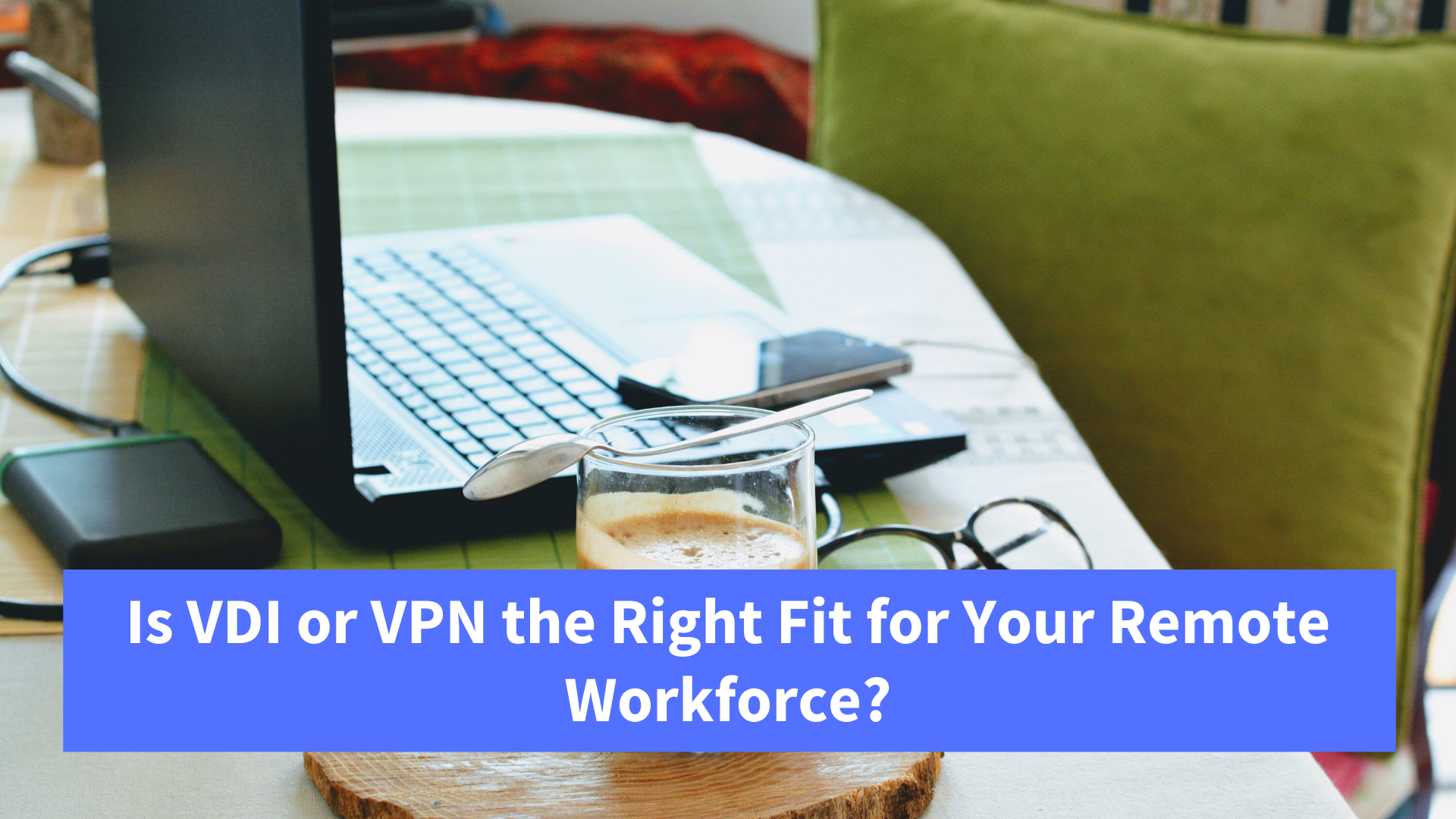Today we are in an unprecedented crisis situation. The pandemic has driven workers around the world out of the office, into their home offices (if workers are lucky enough to have home offices). Zoom calls are everywhere, and as workers are attempting to escape the distraction of their children by hiding in their cars, IT leaders are asking the question – how can they possibly enable remote work across such a complex technological landscape. Two options inevitably crop up. VDI and VPN. But the two options are inherently different. Each is complete with its own sets of pros and cons. But which is right for you? Luckily, VDI and VPN are not exclusive, but can be used together to solve complimentary use cases.
VDI or VPN – the VDI Edge
There are a number of reasons why IT relies on VDI in a pandemic. VDI is secure, it is “hardware agnostic”, and it’s not difficult for workers to use. Let’s get into this a little bit more.
Built-In Security
There’s no need to open your secure digital perimeter. VDI keeps all of the processing, heavy lifting, and confidential data on-premises or in your Cloud. Data does not need to be stored on the local device, nor applications. In fact, nothing need be on the local device besides the client connector. This also provides additional benefits in regards to cost. If your employees do not have dedicated corporate laptops, for example, they can easily access corporate data and applications from personal devices or via something called live boot. Organizations save money this way by leveraging existing devices, instead of purchasing brand new laptops for everyone.
Hardware Agnostic
With VDI, the endpoint doesn’t matter. Advanced Linux operating systems like NoTouch OS, for example, can convert virtually any device into a conduit for necessary apps and data. This opens up more flexible deployment options for IT in any organization, particularly those tight on budget.
Easy Access for End Users
Another great advantage VDI has is that it’s incredibly easy to deploy. In fact, workers need not know they are working on a virtual desktop – it will look and feel as if they are accessing data and applications on their local devices!
There are problems here, too. If you don’t already have the infrastructure in place for your VDI, it can be a challenge to quickly make the shift. Luckily, solutions like Stratodesk NoTouch software lower the entry bar considerably. Also, DaaS, or desktop as a service, can be deployed quickly, as virtual desktops can be rented. Also, the heavy lifting is all done by the managed service provider, not your in-house IT staff.
VDI or VPN – the VPN Advantage
Next, let’s take a look at VPN. There are some clear benefits to VPN.These include: trusted security, consistent access to resources, same resources available via VPN as would be available in the office, and ease of deployment.
Whereas VDI can convert any device, VPN requires everything to be housed on the endpoint itself. Without VDI, apps, data, processing power – everything your workers need to get their work done MUST be on the endpoint device. This is less of a problem if your workers all have dedicated, corporate laptops. They can simply take their laptops home with them, and then access what they need via VPN when they need it.
But what if all of your users don’t have corporate laptops? And even if they do have them, how are you going to make sure all of their applications are up-to-date. What about when you need to roll out updates to all endpoints, or make important patches. How can you do this for all devices at once?
There is another option, here, however. And that is to use VPN in conjunction with VDI. Once admitted to the corporate network via VPN, endpoints can then access their secure virtual desktops. This means that they can get all their necessary work done without having apps and data on the local device.
VDI and VPN Working Together
An additional benefit of leveraging VDI and VPN together has to do with locally installed applications. Even with VPN, IT must be able to make sure ALL employees have necessary, up-to-date applications installed on their devices. Using VDI with VPN can help with this. With VDI, IT can ensure seamless access to up-to-date applications and data because those are actually being hosted on-premises. This also avoids confidential data being stored on endpoint devices. Meanwhile, organizations can leverage VPN technology to enable workers secure admittance to corporate networks. Once connected, they can do all their work via VDI.
Ultimately, what solution you choose will depend on your unique circumstance. Luckily, however, Stratodesk software supports both VDI and VPN. Our customers take advantage of VPN to connect to their VDI, as well, ensuring added security. Additionally, our solution runs the gamut in regards to endpoints and platforms – we are the first multi-platform, multi-cloud solution for the modern era. Learn more for yourself by trying our free trial, and start enabling secure, reliable remote work!

